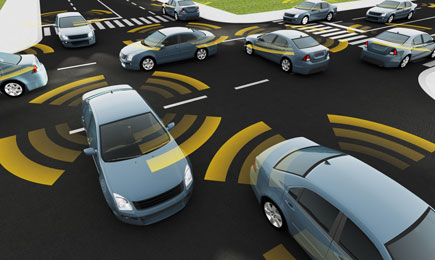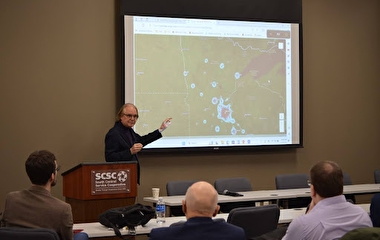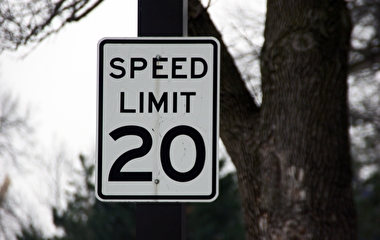Automated vehicles hold promise to reduce congestion, crashes, pollution, and parking demand. But this promise can’t be realized without advanced technology that lets a vehicle “see” its surroundings and operate safely under all conditions.
Julie Schoenfeld founded a company—Strobe Inc.—to produce one such technology, an advanced LiDAR sensor. Schoenfeld, now vice president of technical program management with GM Cruise Automation, discussed this technology and shared her journey as a serial entrepreneur at the CTS Research Conference on November 1.
Schoenfeld decided to launch Strobe when she read a Wall Street Journal article in 2014 that said the size and price of LiDAR technology would have to fall for autonomous vehicles to thrive. “When technology hits the Wall Street Journal, that’s when it’s time to act,” she said. “As an entrepreneur, you don’t want to be too early or too late.”
LiDAR (for light detection and ranging) is one of four types of sensors used by autonomous vehicles to see the world, Schoenfeld explained. LiDAR is critical to autonomous vehicle safety, but it is very expensive because of what has been the small market size; efforts to reduce its cost have resulted in performance decreases. “The self-driving car market changes the economics for LiDAR, creating a huge market that will attract large investment,” she says.
Strobe set out to solve the LiDAR price-performance challenges. Based on its co-founder’s experience in an earlier start-up, Strobe developed and patented a breakthrough laser technology that slashes costs and sensor size while improving performance and guarding against hacking. Strobe was acquired by GM in October 2017.
“But it’s not enough to have great technology,” Schoenfeld said. “You also have to have a great market.” U.S. commuters waste a full week each year in traffic, and cars sit parked 95 percent of the time. But the paramount case for automation is safety: 94 percent of crashes are caused by humans. “Safety is the gating metric,” she said.
Today, owning and operating a car costs about $0.58 per mile, while ride sharing in U.S. urban areas costs $2 to $3 per mile, according to an analysis from AAA. Removing the driver from ride-sharing services could ultimately cut the costs of an autonomous ride to less than $1 per mile, she said.
Less than 1 percent of U.S. miles traveled are currently handled by ride sharing, for a market size of about $20 billion. Cutting the cost to $1 per mile opens about a $750 billion market; below $1 per mile, the market rises to $1.6 trillion. “The culture is shifting,” Schoenfeld said. “That’s why there’s so much interest.”
In terms of partnerships for testing automated vehicles, the goal for companies is to “be everywhere” to understand the various challenges—such as operating in snow and different weather conditions. Right now, companies are consulting with communities that are open to working with them. If cities are eager, “it could happen fast,” she said.
In closing, Schoenfeld offered lessons learned from founding Strobe: Be just ahead of a wave, choose big markets, have a clear value proposition and differentiation, hire domain experts, and understand the resources and information it takes to be successful. “And never, ever, give up.”



